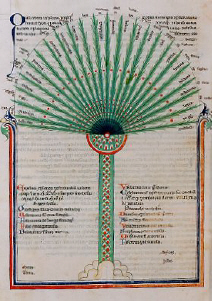Passar da potência ao ato, ou seja, ao terminus ad quem, é sair da escuridão para a luz, é revelar o que está latente na alma, pois “a alma possui os objetos, mas não em ato, depostos numa região obscura” (En. I, 2, 4, 22-23). “Para aclará-los e saber que os possui em si, é necessária uma luz que ilumine o que está impresso nela; é necessário que conforme o que nela está impresso com a realidade da qual é a impressão” (En. I, 2, 4,21-25). Que luz é esta a iluminar a escuridão? “É a alma que de alguma maneira (hoion) os toca e ilumina com uma luz dela proveniente e os põe diante dos olhos” (En. IV, 6, 3, 16-18). “Dessarte, por assim dizer (tôi hoion), os objetos saem do sono obscuro e se tornam mais claros e passam da potência ao ato” (En. IV, 6, 3, 16). Empregando os termos hoion e tôi hoion, Plotino parece demonstrar uma certa tergiversação naquilo que afirma. (Excertos de “Plotino, um estudo das Enéadas”, de R. A. Ullmann)
Light is not an accidental to something else, requiring therefore to be lodged in a base; nor is it a modification, demanding a base in which the modification occurs: if this were so, it would vanish when the object or substance disappeared; but it does not; it strikes onward; so, too (requiring neither air nor object) it would always have its movement. Enneads: IV V. 6
This vision sees, by another light, the objects illuminated by the First Principle: setting itself among them, it sees veritably; declining towards the lower Nature, that upon which the light from above rests, it has less of that vision. Passing over the visible and looking to the medium by which it sees, then it holds the Light and the source of Light. Enneads: V V. 7
